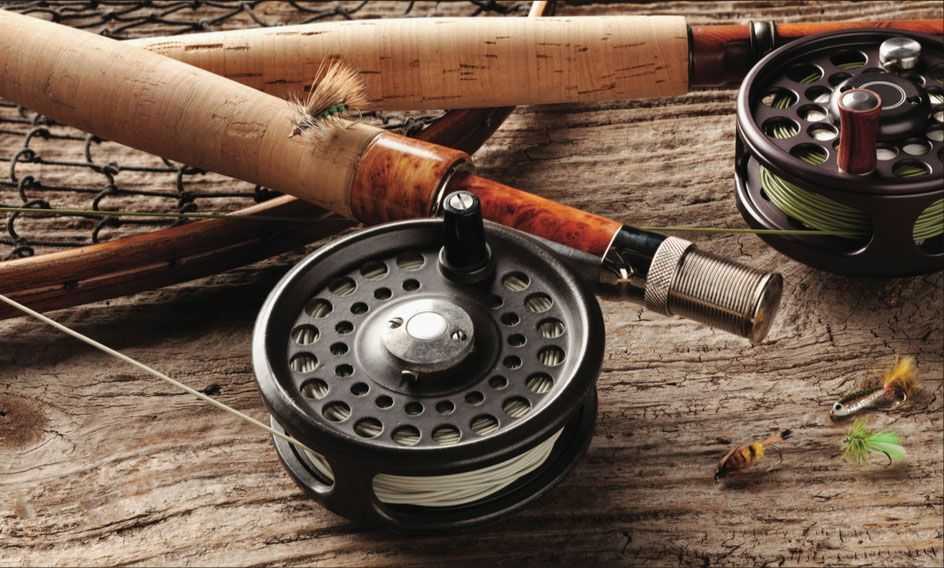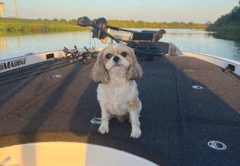My first fishing rod was a hand-me-down from my father back in the 60’s. A 6’, medium action spinning rod, coupled with a Mitchell 300 reel was all I needed to tackle bass, walleye and panfish.
The idea that you needed more than one fishing rod for different tackle and techniques or for different types of fish never occurred to me or my brothers as we alternated between bass fishing with spoons and jitterbugs, to Heddon River Runts trolling for walleye and nightcrawler rigs for huge sunfish.
As the years passed and I became more involved in tournament fishing, my fishing rod arsenal grew. But the growth was due more to convenience and having back-up rods as opposed to needing rods for a specific type of technique or lure presentation.
Fast forward to 2015 and bass fishing has evolved into a multi-million dollar industry with manufacturers producing fishing rods of every size and shape, designed to meet the needs of virtually every lure in your tackle box.
In the early days of bass fishing tournaments, the Ambassadeur 5000 baitcasting reel was king with its 5.3, fast retrieve, gear ratio and anti-backlash mechanism. Often coupled with a very stiff 5 1⁄2’ pistol grip rod, it was considered by many fishermen to handle most any lure or presentation needed.
But those days have long-since been replaced with lure-specific, line specific and presentation-specific rods that in all likely-hood confuse most fishermen more than they help.
Flipping and pitching rods from 7’ to 8’, worm rods in both spinning and casting styles, spinnerbait rods, crankbait rods, drop-shot rods……the list goes on and on. And that’s just for the bass fishermen. There are similar choices for walleye, muskie, smallmouth bass and panfish. And of course, saltwater fishing.
Do we really need all these fishing rods to be successful? As a rod builder, I would probably answer that question with two additional questions, “Do you fish with the same lure all day, and do you fish for the same type of fish on every trip”?
I started building rods over 40 years ago. Initially just to repair broken tips and guides for myself and my friends, but eventually to earn extra money and build rods for myself that could meet the needs of the different lure types as well as the different types of fish I was after. I realized, as many fishermen did, that one rod could not meet all my needs.
With the introduction of tournament bass fishing, anglers everywhere came to the same realization. Manufacturers began producing rods of different lengths, different weights and a wide variety of power ratings. It soon became possible to buy a rod specifically designed to fish a plastic worm, a crankbait, spinnerbait or topwater lure.
The length of the rods took on a dramatic change as well, going from 5 1⁄2 or 6’ in length, all the way to 8’. Power ratings became the norm and ranged from light to mag-heavy, while the composition changed from fiberglass to graphite. Weight and sensitivity became the buzz words and bass fishermen soon realized there was a world of choices when it came to selecting a fishing rod. And, more importantly, one rod would no longer be enough.
Lighter weight reels, braided lines and higher grade guides became critical considerations in choosing the right rod. Fishermen began to realize that a longer rod allowed for a longer cast, while a shorter rod increased one’s accuracy.
It’s no wonder that even the weekend angler now sports as many as a half dozen rods for a day’s fishing.
But even with the flood of lure specific rods on the market, many fishermen still seek something that only a custom rod builder can provide, and that’s a custom built rod.
When I moved to Florida 20+ years ago, I started fishing on occasion with Bob Scranton in Avon Park, who loved to wade-fish in and around the islands in Charlotte Harbor. One day he brought me a 9’ flyrod, an 8 weight typically used for snook and redfish. He asked me if I could strip the flyrod and rebuild it as a spinning rod. This meant removing all the guides, handle and reel seat and replacing it with a spinning reel seat and large diameter guides.
We had been using 7’ medium action spinning rods as we waded the water free-lining “greenies” and catching loads of seatrout, reds and snook. Although we typically waded chest deep in the warm water, the fish were often just beyond our ability to cast to them. The 9’ flyrod converted into a spinning rod did the trick. We could lob our baits a good 10-15’ further with these long rods and as a result, we’ve been fishing with them ever since. Over the years I’ve built dozens of these nine footers using 8, 9, and 10 weight flyrod blanks.
Years ago, when the Sluggo was introduced to the market, I also needed a longer rod to cast the light-weight lure a longer distance, so I built myself an 7’ 11” spinning rod (so I could use it in bass tournaments – 8’ was the maximum allowable length), and I still use the rod today with a variety of topwater frogs, toads and other plastic baits.
The real beauty of a custom built rod is the fact that it is truly a “one of the kind” rod. The customer can select the length, power rating, handle type, quality of guides and even the color combinations of the thread wrappings. Further personalizations might include inscriptions like Happy Birthday, Merry Christmas, or a passage from the bible. It’s all up to the customer. The end product is a rod that will perform to the customers’ expectations while becoming a treasured tool in their fisherman’s arsenal.
[easy-social-share]







